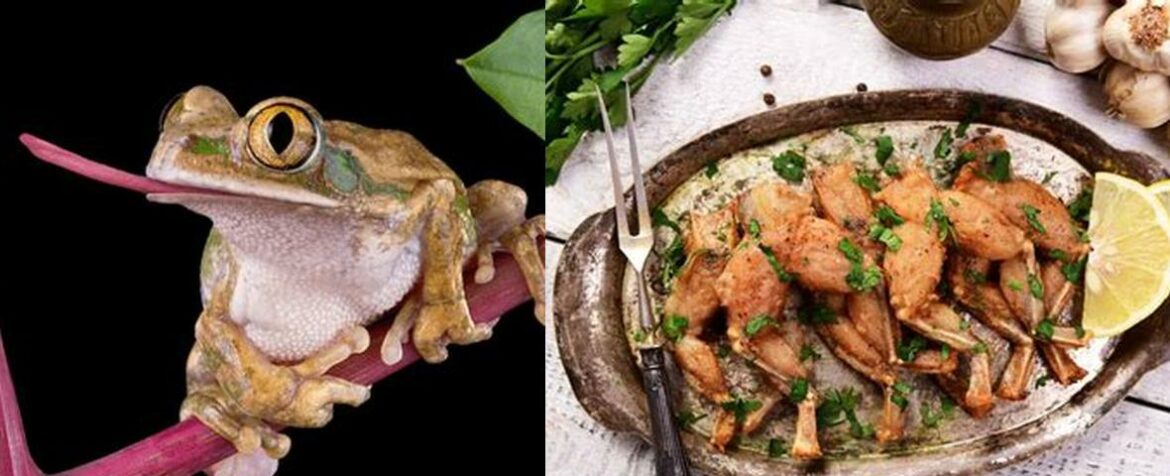Have you ever wondered what frog tastes like? Well, prepare to embark on a culinary adventure as we dive into the world of this unique delicacy. From French cuisine to Asian street food, frogs have found their way onto plates around the globe. Whether you’re a curious foodie or simply looking to expand your palate, this blog post will satisfy your curiosity and leave you hopping for more. So, grab your fork and join us as we explore the intriguing question: What does frog taste like?
What Does Frog Taste Like: A Culinary Exploration of a Unique Delicacy
In the realm of culinary exploration, the taste of frog legs has captivated the curiosity of adventurous gastronomes for centuries. This unique delicacy, often revered in cuisines across the globe, has garnered a reputation for its distinct flavor profile and intriguing texture. In this comprehensive guide, we delve into the intriguing world of frog legs, unraveling their taste, culinary significance, and the factors that influence their unique appeal.
A Culinary Journey: Exploring the Taste of Frog Legs
The taste of frog legs has been a subject of debate among food enthusiasts, with descriptions ranging from a combination of chicken and fish to a resemblance to crab or lobster. The versatility of frog legs allows them to adapt to various cooking methods, each imparting its own unique flavor dimension. Deep-fried frog legs, reminiscent of crispy chicken wings, offer a delightful crunch, while boiled frog legs exude a delicate tenderness that melts in the mouth. The final taste symphony depends on the chosen cooking technique, the accompanying ingredients, and the personal preferences of the diner.
Frog legs have gained prominence as a culinary delicacy in many cultures, particularly in Chinese and French cuisines. In China, frog legs are often stir-fried with ginger, garlic, and chili peppers, creating a harmonious blend of flavors that tantalize the palate. French cuisine elevates frog legs to an art form, showcasing them in classic dishes such as “cuisses de grenouilles,” where the legs are lightly breaded and pan-fried, resulting in a crispy exterior and a tender, succulent interior.
Nutritional Value: Unveiling the Health Benefits of Frog Legs
Beyond their culinary appeal, frog legs hold nutritional significance, offering a treasure trove of essential nutrients. They are an excellent source of protein, providing a lean and digestible alternative to red meat and chicken. The presence of omega-3 fatty acids contributes to heart health, while potassium supports healthy blood pressure levels. Additionally, frog legs are low in cholesterol and fat, making them a guilt-free indulgence that can be enjoyed as part of a balanced diet.
Culinary Versatility: A Canvas for Culinary Creativity
The versatility of frog legs extends beyond taste and nutritional value, allowing them to shine in a diverse array of culinary creations. Deep-frying, boiling, and stir-frying are popular cooking methods that bring out the unique flavors and textures of frog legs. They can be incorporated into salads, soups, and stews, adding a unique dimension to these classic dishes. Additionally, frog legs can be marinated in various sauces and spices, infusing them with a symphony of flavors that cater to diverse palates.
Safety Precautions: Ensuring a Safe Culinary Experience
While frog legs are generally considered safe to consume, it is crucial to take necessary precautions to ensure a safe culinary experience. Thoroughly cleaning the frog legs before cooking is paramount to remove any bacteria or contaminants. Additionally, it is essential to cook frog legs to the proper internal temperature to eliminate any potential health risks. Consuming raw or undercooked frog legs can increase the risk of salmonella infection, emphasizing the importance of proper handling and cooking techniques.
Conclusion: Embracing the Culinary Delights of Frog Legs
Frog legs, with their distinctive flavor profile, nutritional benefits, and culinary versatility, offer a unique and delectable culinary experience that has captivated taste buds worldwide. Whether you are an adventurous foodie seeking new culinary frontiers or a seasoned gastronome appreciating the nuances of fine dining, frog legs present an opportunity to expand your culinary horizons. With careful preparation and cooking techniques, you can safely savor the unique taste and texture of frog legs, embarking on a culinary journey that promises to delight and tantalize your taste buds.
FAQ about What Does Frog Taste Like
Q: What does frog taste like?
A: Frog legs have a unique flavor profile that can be described as a cross between chicken and fish, with a hint of earthiness.
Q: Are frog legs considered a delicacy?
A: Yes, frog legs are often considered a delicacy in many cuisines around the world.
Q: How are frog legs typically prepared?
A: Frog legs are commonly prepared by being battered and deep-fried, sautéed with garlic and butter, or used in stews and soups.
Q: What is the texture of frog legs like?
A: The texture of frog legs is often compared to that of chicken wings, with a tender and slightly chewy consistency.
Q: Are there any factors that influence the taste of frog legs?
A: Yes, the taste of frog legs can be influenced by factors such as the diet of the frogs, the cooking method used, and the seasonings and spices added during preparation.
Q: Can anyone safely enjoy the taste of frog legs?
A: Yes, as long as the frog legs are properly cooked and sourced from reputable suppliers, anyone can safely savor the unique taste and texture of frog legs.


